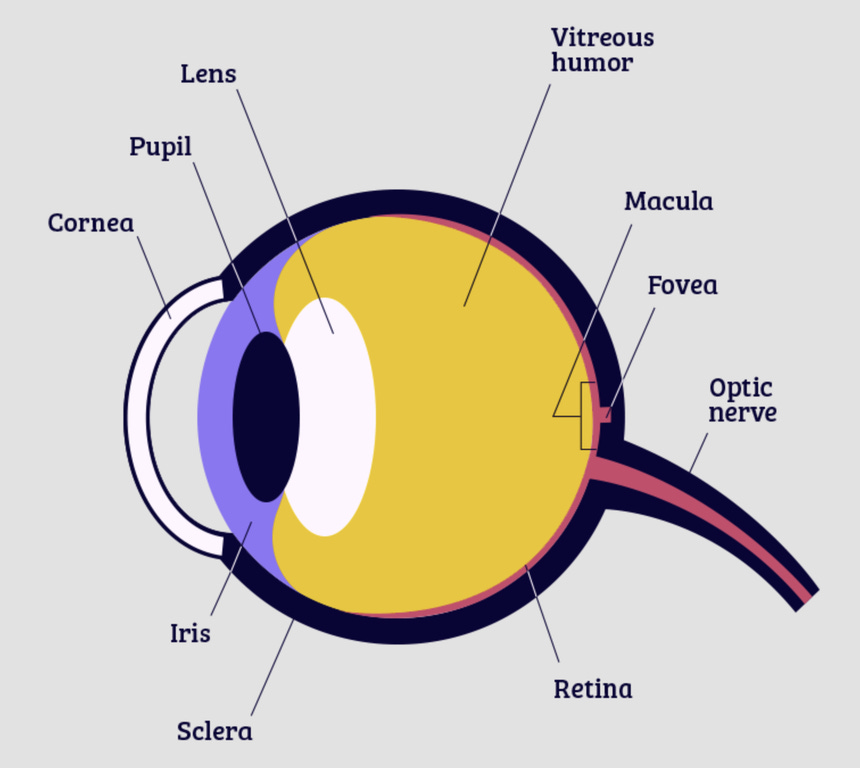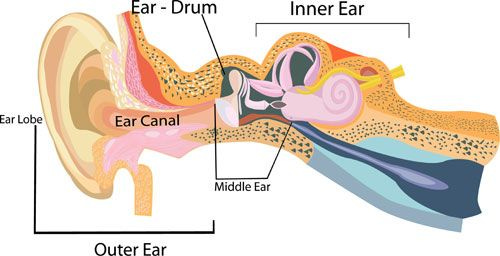CQRG 2024 Medical Terminology Bootcamp
SESSION 4 / INTRODUCTION TO GENERAL AND SPECIAL SENSES TERMINOLOGY
Welcome!
If you are new to our medical terminology program we invite you to browse our previous lessons and program activities. Simply click on the PROGRAMS tab above to view individual lessons and materials. Additional activities and reviews are posted on a weekly basis in the NOTES section. Each lesson in the program is a standalone experience, so there is never a worry if you need to take a break. Subscribe to receive the lessons emailed to you, or follow along in the Notes section.
GENERAL AND SPECIAL SENSES
The information that our sensory systems, or "senses," receive and process enable us to perceive, comprehend, and navigate the world around us.
These special systems are spread throughout our entire body. Signals from them affect both voluntary and involuntary motor activities. When there is a problem with these systems it may impact the body’s ability to maintain well-being and the individual’s ability to safely interact with their environment.
You may already be familiar with the “senses” of balance, hearing, sight, smell, taste and touch, but there may be some that you have not considered to this point. For example, pain and temperature.
In the study of physiology, we learn that the human body utilizes two major types of senses, these are general senses and special senses.
A general sense is one that is widely distributed in the body. They have receptor cells in other organs' structures.
Example: mechanoreceptors
found in the walls of blood vessels, muscles, and skin, contribute to the sense of touch
Special senses are those that have a specific organ devoted to them.
Example: the ear, the eye, nose, or tongue.
OVERVIEW OF TERMS ASSOCIATED WITH THE SENSES
Let’s review some common medical terms related to the sensory systems.
Gustation
Sense of Taste
Gustation is the special sense associated with the tongue. This sense is made possible via bumps called papillae. These papillae contain architecture necessary for “gustatory transduction.”
Taste buds in the papillae contain specialized receptors. These gustatory receptor cells are responsible for the transduction of taste stimuli.
The receptor cells are sensitive to the chemicals contained within ingested food items
They release neurotransmitters based on specific chemicals and their amounts in the eaten foods.
Neurotransmitters from gustatory cells can activate sensory neurons located in the glossopharyngeal, facial, and vagus nerves.
Neurotransmitters are chemical messengers. Their function is to relay signals from nerve cells to target cells in the body.
Tastes include: bitter, salty, sour, sweet, and umami, with the addition of fats in some newer research.
(Scroll to the end for a few videos that will help you understand this process better.)
Olfaction
Sense of Smell
Olfaction, otherwise known as the sense of smell, is also responsive to chemical factors.
The senses of smell and taste are sometimes referred to as the chemosensory system. This is due to the fact that both of them relay information to the brain regarding the chemical composition of inputs via transduction.
Olfactory receptors are found in a region located within the superior nasal cavity
Receptor messages (scents) travel to the cerebrum (primary olfactory cortex) as well as the hypothalamus
This is where particular scents become associated with memory and even emotions.
Vision
Sense of Sight
The special sense known as vision is based in the transduction of stimuli received by the eyes.
The human retina (labeled in the above diagram) is composed layers. It contains unique cells able to initiate the processing of visual stimuli. These photoreceptors’ (“rods and cones”) membrane potential is shifted when stimulated by light energy.
Rods and cones are responsible for converting light into signals that can be understood by the brain.
Rods are photoreceptive cells that are highly sensitive to light.
Cones are capable of detecting a wide spectrum of light photons. They are responsible for color vision.
Audition
Sense of Hearing
Audition, is the sense of hearing. It occurs via the transduction of sound waves. During that process, neural signals are generated by ear structures.
The auricle is the visible part of the ear (outside).
The C-shaped curves of the auricle help direct sound waves to the auditory canal.
At the end of the auditory canal lies the tympanic membrane. The tympanic membrane vibrates after being hit by sound waves.
The middle ear structures work together to convey sound wave information to the inner ear where transduction will produce a neural signal.
Somatosensation
Sense of Touch
Somatosensation, or touch, is known a general sense (meaning that its receptors are not associated with one specialized organ, but instead spread throughout the body). It is comprised of a group of associated sensory modalities (touch, proprioception, and interoception).
This includes:
light touch
pressure,
vibration,
tickle,
itching
temperature,
pain,
proprioception, and kinesthesia.
Somatosensory receptors are not only found in skin, but also in ligaments, joints, muscles, tendons, and in the walls of some body organs.
The Senses & Health
It is important to remember that our sensory organs and systems function to transmit signals from the environment that are then processed to help the body maintain safety and well-being. Any condition that affects or impairs the senses or sensory systems can negatively impact a patient’s ability to carry out daily activities or function independently and safely.
This lesson article serves as a brief overview on the senses, we invite you to view the optional videos that follow to learn more about each one. In addition, Medical Terminology for Healthcare Professions, Ch. 4 “Sensory Systems,” provides an in-depth learning experience on the senses and sensory organs.
Helpful Videos
(More Intense Video Overview)
Recommended Reading (Optional)
Medical Terminology for Healthcare Professions, Nelson, A., & Greene, K. (2021)
University of West Florida Pressbooks.
Read: Ch. 4, Sensory Systems
Available Online: https://pressbooks.uwf.edu/medicalterminology/chapter/sensory-systems/
Lesson 3 Self- Guided Assessment Available
Don’t forget Zoom Reviews are available on Wednesday Evenings 2x’s Monthly.
Lesson 3 Self-assessment:
flipbookpdf.net/web/site/9198f60eac54ed…
Resources:
The language of medicine, Henrik R Wulff, MD (2004)
https://www.ncbi.nlm.nih.gov/pmc/articles/PMC1079361/
Medical Terminology for Healthcare Professions, Katherine Greene and Andrea Nelson
Review The Lesson Materials With Curated Activities…
Stress-free activities complement the materials introduced with each session. Simply download the PDF, review online, or print the crossword puzzle page to complete at your leisure.
Lesson 4 Crossword Puzzle:
https://flipbookpdf.net/web/site/1727480176694cab0678ecc5596362a28a11155b202403.pdf.html













